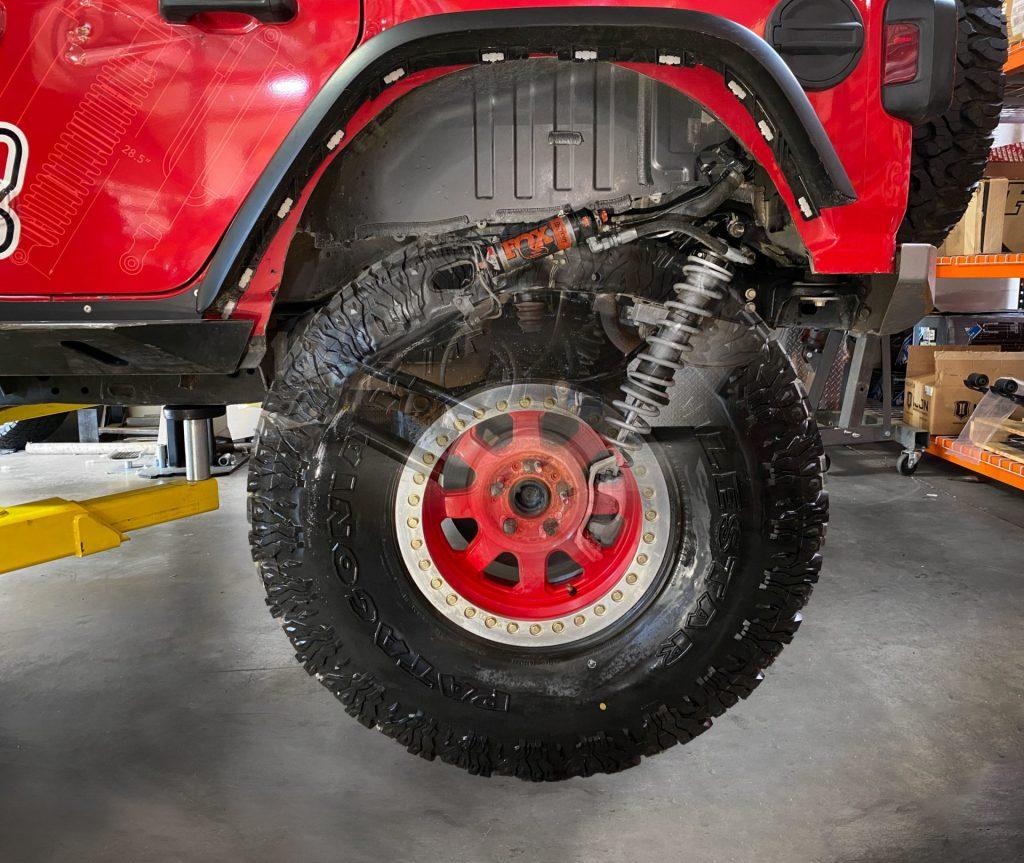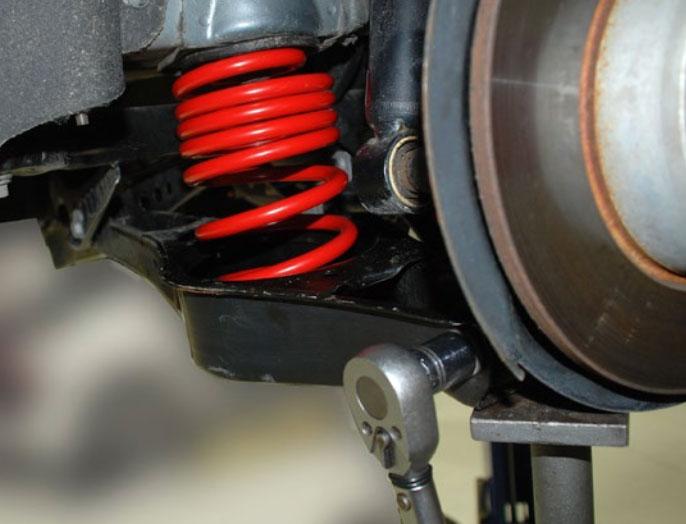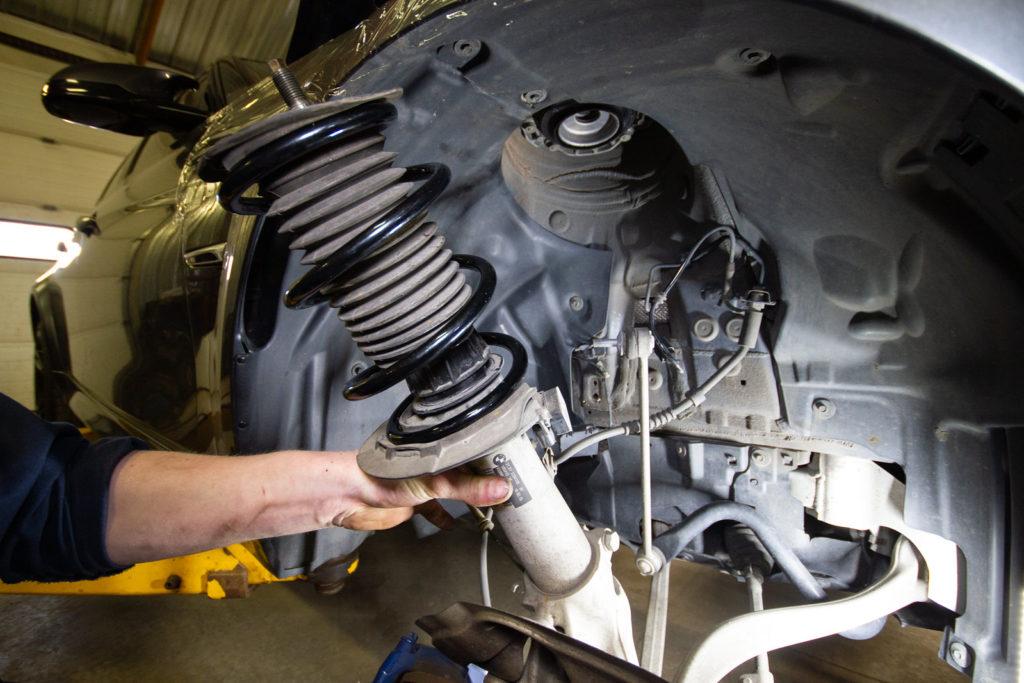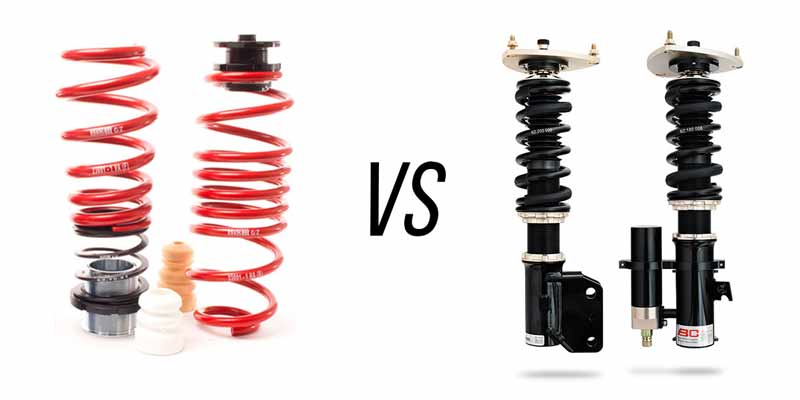Coilovers vs. Lowering Springs: A Comprehensive Comparison
Lowering springs and coilovers are both popular choices among automotive enthusiasts looking to improve the performance and aesthetics of their vehicles. Both options offer a variety of benefits, but there are significant differences to consider when choosing between them. In this article, we will compare coilovers and lowering springs in terms of performance, cost, installation, and other factors.
Table of Contents
READ: The History of the Sports Car: A Timeline
What Are Coilovers?

Coilovers are suspension systems consisting of a shock absorber, spring, and adjustable perch. They are used in racing and performance applications to achieve superior handling and improved stability. Coilovers are a type of suspension system consisting of a shock absorber, spring, and adjustable perch.
They are designed to provide superior handling and stability by allowing the user to adjust ride height and spring stiffness. This makes them ideal for performance applications such as racing and high-performance street driving.
Coilover Components
The shock absorber is at the core of a Coilover system, which is responsible for dampening the effects of road disturbances. The shock absorber is connected to a spring, which provides the necessary rebound and support for the vehicle. Finally, the adjustable perch allows the user to adjust the ride height and spring stiffness.
What Are Lowering Springs?

Lowering springs are suspension components designed to lower a vehicle's ride height. By reducing body roll, improving aerodynamics, and providing an aggressive stance, they can offer various benefits to performance-oriented cars.
Installing lowering springs can be complex, and selecting the correct springs for your vehicle is important. Finally, it is essential to understand the potential effects of lowering springs, both positive and negative.
The Benefits of Lowering Springs
Lowering springs offer a variety of benefits, including improved handling, better aerodynamics, and a more aggressive stance. In terms of handling, lowering springs reduce body roll and improve cornering performance. This can be especially beneficial on performance-oriented vehicles, allowing quicker cornering with greater accuracy.
Additionally, lowering springs can improve aerodynamics, as the lower ride height reduces drag and increases aerodynamic efficiency. Finally, lowering springs can give a vehicle a more aggressive look, as the lower ride height can make the car appear more muscular.
Performance:
One of the critical differences between coilovers and lowering springs is the performance they offer. Coilovers provide a more precise and adjustable ride, allowing drivers to customize their vehicles' height, damping, and stiffness. Lowering springs are less adjustable and provide a more basic ride.
Cost:
The cost of coilovers and lowering springs can vary greatly depending on the brand and model. Generally, coilovers are more expensive than lowering springs but tend to last longer and provide better performance.
Installation:

The installation process for coilovers and lowering springs also differs. Coilovers are more complicated and labor-intensive to install, and they often require the help of a professional mechanic. On the other hand, lowering springs are easier to install and can usually be done by a novice mechanic.
Adjustability:
Another significant difference between coilovers and lowering springs is how adjustable they are. Coilovers are highly adjustable, allowing drivers to customize their vehicles' height, damping, and stiffness. Lowering springs are less adjustable and offer a more basic ride.
READ: What Adds Horsepower To A Car?
Durability:
Regarding durability, coilovers and lowering springs differ in their expected lifespan. Coilovers are more durable than lowering springs and can last many years if properly maintained. Lowering springs, on the other hand, have a shorter lifespan and often need to be replaced.
Handling:
Vehicle handling can also be affected by the type of suspension components used. Coilovers provide better handling than lowering springs due to their adjustable nature and ability to provide a more precise ride. Lowering springs, on the other hand, provide a more basic ride and can be less effective in handling.
Ride Comfort:

When it comes to riding comfort, coilovers and lowering springs offer different levels of comfort. Coilovers are highly adjustable, allowing drivers to customize their vehicles' height, damping, and stiffness. Lowering springs, on the other hand, provide a more basic ride and are less adjustable.
Noise:
When deciding, it is essential to consider the noise level of the suspension components. Coilovers tend to be quieter than lowering springs, as they can absorb vibrations and road noise better. Lowering springs, however, can be noisier and create more road noise.
READ: How Much HP Do Headers Add?
Conclusion:
When deciding between coilovers and lowering springs for their vehicle, drivers should consider each option's performance, cost, installation, adjustability, durability, handling, ride comfort, and noise levels. Coilovers are more expensive and complicated to install, but they provide better performance, adjustability, and durability.
Lowering springs are cheaper and easier to install, but they provide a more basic ride and have a shorter lifespan. Ultimately, the decision should be based on the individual needs and preferences of the driver.

